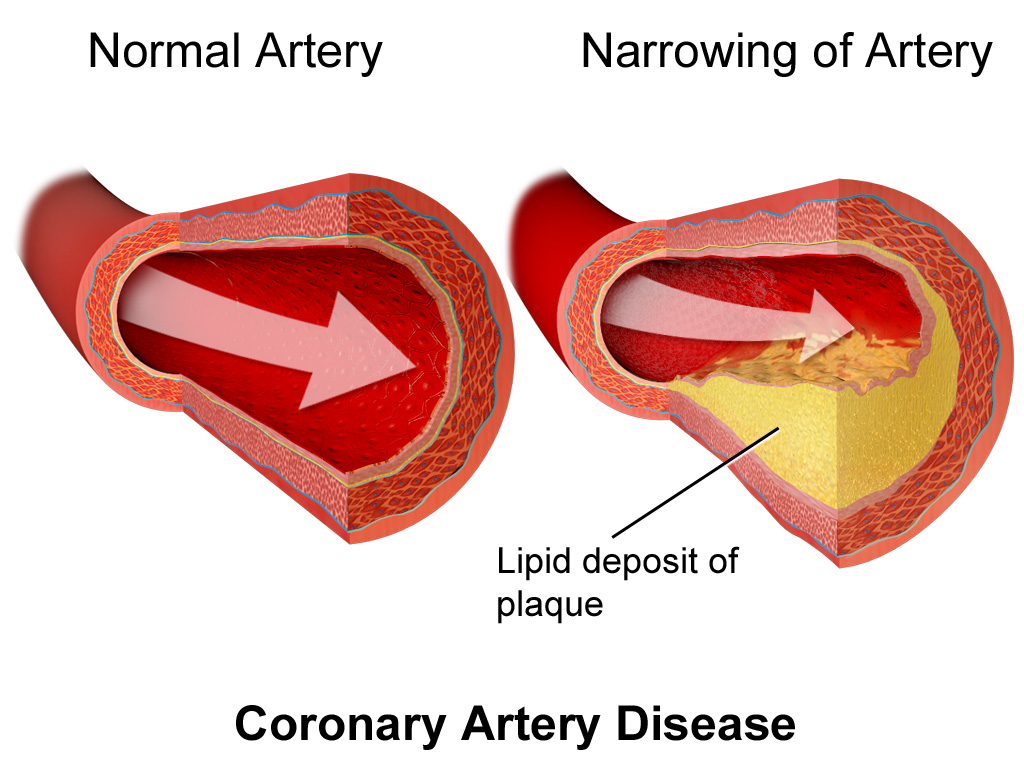
A healthy heart diet
Your heart is the most important muscle in your body. Each day it beats approximately 100,000 times to pump life-giving blood to every organ of your body via a maze of arteries and veins. But, if one of these arteries becomes blocked with cholesterol a heart attack or stroke can occur. Yet, half of all Australians have high levels of cholesterol in their blood, so is it any surprise that heart disease is the leading cause of death in Australia?
What is hypercholesterolemia?
Hypercholesterolemia occurs when there are high levels of cholesterol in the blood. A small amount of cholesterol is essential for our bodies but high amounts are dangerous for our health. High levels of cholesterol can cause a build up of fatty deposits inside the blood vessels. The blood vessels can eventually become blocked leading to a heart attack or stroke.
What is cholesterol?
Cholesterol is a type of fat produced by the liver that our bodies need to perform important functions such as making hormones and bile. There are two types of cholesterol: low density lipoproteins (LDL) and high density lipoproteins (HDL).
LDL cholesterol
LDL cholesterol is also known as the ‘bad’ or ‘lousy’ cholesterol as it is the fat that causes the fatty deposits that block the blood vessels.
HDL cholesterol
HDL cholesterol is also known as the ‘good’ or ‘happy’ cholesterol as it helps protect against heart disease by clearing away LDL cholesterol build up from the blood vessels.
Checking cholesterol levels
When a doctor requests a blood test to check your cholesterol, the results will include an amount for ‘total cholesterol’ which is the combined amount of LDL and HDL cholesterol present in your blood. The individual amounts of LDL and HDL will also be included in the results. A low level of LDL cholesterol and a high level of HDL cholesterol will help decrease your risk of heart disease.
Blood test result targets
Test Target Target for people at high risk*
Total cholesterol <5.5 mmol/L <4.0 mmol/L
HDL 1.0 mmol/L >1.0 mmol/L
LDL <3.0 mmol/L <2.5 mmol/L
*People at high risk include those with diabetes, high blood pressure, heart disease and those who have previously had a heart attack.
Risk factors for hypercholesterolemia
The risk factors for hypercholesterolemia include:
A family history of high cholesterol
Being overweight
Excessive consumption of foods containing high amounts of saturated fats.
Getting older.
How is hypercholesterolemia treated?
In addition to any medications your doctor may provide, the best way to treat hypercholesterolemia is by making dietary changes. These dietary changes will help you to improve your cholesterol profile.
Limit saturated fats
Saturated fats or ‘bad fats’ as they are often known increase the production of LDL (bad) cholesterol. Saturated fats are found in processed foods such as cakes, biscuits and chips and in high fat animal foods such as butter, cream, cheese and fatty meats.
Limit trans fats
Trans fat is another type of ‘bad’ fat. It is even more dangerous than saturated fats because in addition to increasing your LDL (bad) cholesterol, it also decreases your HDL (good) cholesterol. Trans fats are predominantly found in foods which have undergone processing such as hydrogenation. Foods that are deep fried and pastries commonly contain trans fats.
Increase your intake of good fats
Conversely, it is essential to consume an adequate intake of good fats such as monounsaturated and polyunsaturated fats. These good fats increase the production of HDL (good) cholesterol and increase the size of LDL (bad) cholesterol so that it doesn’t stick to the arteries as easily. Furthermore, omega 3 polyunsaturated fats provide an anti-inflammatory effect which helps to reduce the build up of plaque in the arteries.
Consume enough plant sterols
Plant sterols are substances found in all plants. They are mainly found in vegetable oils but also in small amounts in nuts, legumes, grains and cereals. Plant sterols can help lower cholesterol levels because they have a similar chemical structure to cholesterol and compete with cholesterol to be absorbed into the body so less cholesterol is absorbed. It is recommended that people wanting to reduce their LDL cholesterol levels consume 2-3 grams of plant sterol enriched foods each day.
Have a diet rich in soluble fibre and beta-glucan
Soluble fibre is found mainly in plant cells. Good sources of soluble fibre include fruits and vegetables, dried beans, peas, lentils, psyllium and soy products. Beta-glucan is a type of soluble fibre found in large amounts in oat and barley. Beta-glucan helps lower the amount of LDL cholesterol in the body. Cholesterol enters the small intestine from the food we eat but mainly from bile produced by the liver. Normally that cholesterol is reabsorbed into the blood and back to the liver. Beta-glucan stops the cholesterol being reabsorbed by binding to it and removing it out of the body through the bowel.
Include some soy protein
Soy protein is rich in a compound called isoflavones which has been shown to reduce ‘bad’ LDL cholesterol and increase ‘good’ protective HDL cholesterol. This helps to prevent the build up of plaque in your arteries, decreasing the chance of a heart attack or stroke. Foods rich in soy protein such as tofu, soy milk, soy patties and tempeh are also usually low in saturated fat and cholesterol making them a nutritious alternative to meat. It is recommended that you consume 25g of soy proteins each day.
Moderate cholesterol intake
The body makes cholesterol itself. We now know that eating foods that contain cholesterol don’t necessarily increase the cholesterol levels in your blood stream. So, you can have a moderate intake of cholesterol –rich foods such as eggs and prawns, but don’t go overboard.
